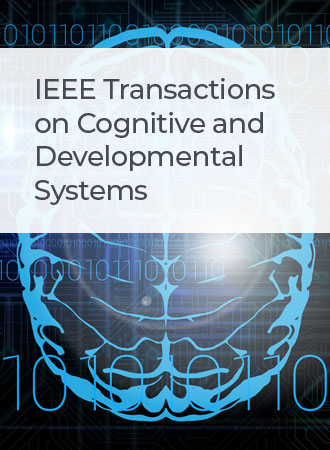将人工神经网络转换为超低延迟尖峰神经网络以进行动作识别
IF 5
3区 计算机科学
Q1 COMPUTER SCIENCE, ARTIFICIAL INTELLIGENCE
IEEE Transactions on Cognitive and Developmental Systems
Pub Date : 2024-03-14
DOI:10.1109/TCDS.2024.3375620
引用次数: 0
摘要
尖峰神经网络(SNN)因其在超低功耗事件驱动神经形态硬件实现方面的潜力而备受关注。获得尖峰神经网络的有效策略之一是将人工神经网络(ANN)转换为尖峰神经网络。然而,现有的 ANN-SNN 转换研究主要集中在图像分类任务上,对动作识别任务的探索十分有限。本文研究了 SNN 在动作识别任务中的性能退化问题。通过深入分析,我们提出了一种称为可扩展双阈值映射(SDM)的框架,它能有效克服三种类型的转换误差。通过有效缓解这些转换误差,我们能够缩短 SNNs 的尖峰发射率与 ANNs 的激活值保持一致所需的时间。因此,我们的方法能够生成准确且超低延迟的 SNN。我们在多个动作识别数据集上进行了广泛的评估,包括中佛罗里达大学(UCF)-101 和人类运动数据库(HMDB)-51。通过严格的实验和分析,我们证明了我们方法的有效性。值得注意的是,在 UCF-101 数据集上,SDM 的 Top-1 准确率高达 92.94%,而延迟时间却极短(4 个时间步),这凸显了该方法在降低计算要求的同时还具有很高的性能。本文章由计算机程序翻译,如有差异,请以英文原文为准。
Converting Artificial Neural Networks to Ultralow-Latency Spiking Neural Networks for Action Recognition
Spiking neural networks (SNNs) have garnered significant attention for their potential in ultralow-power event-driven neuromorphic hardware implementations. One effective strategy for obtaining SNNs involves the conversion of artificial neural networks (ANNs) to SNNs. However, existing research on ANN–SNN conversion has predominantly focused on image classification task, leaving the exploration of action recognition task limited. In this article, we investigate the performance degradation of SNNs on action recognition task. Through in-depth analysis, we propose a framework called scalable dual threshold mapping (SDM) that effectively overcomes three types of conversion errors. By effectively mitigating these conversion errors, we are able to reduce the time required for the spike firing rate of SNNs to align with the activation values of ANNs. Consequently, our method enables the generation of accurate and ultralow-latency SNNs. We conduct extensive evaluations on multiple action recognition datasets, including University of Central Florida (UCF)-101 and Human Motion DataBase (HMDB)-51. Through rigorous experiments and analysis, we demonstrate the effectiveness of our approach. Notably, SDM achieves a remarkable Top-1 accuracy of 92.94% on UCF-101 while requiring ultralow latency (four time steps), highlighting its high performance with reduced computational requirements.
求助全文
通过发布文献求助,成功后即可免费获取论文全文。
去求助
来源期刊

IEEE Transactions on Cognitive and Developmental Systems
Computer Science-Software
CiteScore
7.20
自引率
10.00%
发文量
170
期刊介绍:
The IEEE Transactions on Cognitive and Developmental Systems (TCDS) focuses on advances in the study of development and cognition in natural (humans, animals) and artificial (robots, agents) systems. It welcomes contributions from multiple related disciplines including cognitive systems, cognitive robotics, developmental and epigenetic robotics, autonomous and evolutionary robotics, social structures, multi-agent and artificial life systems, computational neuroscience, and developmental psychology. Articles on theoretical, computational, application-oriented, and experimental studies as well as reviews in these areas are considered.
 求助内容:
求助内容: 应助结果提醒方式:
应助结果提醒方式:


